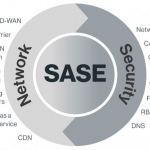- Like
- SHARE
- Digg
- Del
- Tumblr
- VKontakte
- Flattr
- Buffer
- Love This
- Save
- Odnoklassniki
- Meneame
- Blogger
- Amazon
- Yahoo Mail
- Gmail
- AOL
- Newsvine
- HackerNews
- Evernote
- MySpace
- Mail.ru
- Viadeo
- Line
- Comments
- Yummly
- SMS
- Viber
- Telegram
- JOIN
- Skype
- Facebook Messenger
- Kakao
- LiveJournal
- Yammer
- Edgar
- Fintel
- Mix
- Instapaper
- Copy Link
Introduction
Outsourcing your company’s IT support needs can be a tempting prospect, giving you a wide range of benefits including access to a team of experts, proactive management of your digital assets, and top guidance on forming a smart digital strategy.
However, it’s a situation you need to go into with your eyes wide open. Given that the industry is expected to grow by approximately $20 billion annually through 2023, knowing how to start a business relationship and whether it’s a good idea for your business for you to even try to use this type of outsourced assistance.
Jason Simons with ICS in Austin shares ten tips to help you make a smart choice for your company.
1. Do you need to outsource?
Digital transformation requires flexibility, which is why so many companies turn to outsourcing a variety of services-based departments, such as accounting and IT support. But is it right for you? Determine what you want to achieve, including software development, saving money, optimizing your business, and similar aspects. Determine whether outsourcing brings value is a big part of deciding whether it makes sense. One key indicator is employees working over 50 hours weekly, as burnout impacts over 56% of IT professionals.
2. What will they do?
You need to have a direction to get your business where you want it to go. If you’ve decided to outsource your IT work, you want to make sure that the company you’re working with can handle the aspects of your direction that you can’t handle in-house. You’ll need to identify both the short- and long-term goals for your company’s digital accomplishments, preparing written expectations to provide your outsourcing team with so that everyone is on the same page.
3. Select the Right MSP
When you’re selecting an MSP to work with your business, you’ll want to make sure of a few things. Make sure they have industry experience if at all possible, which will drastically reduce the learning curve. A discussion will ensure that they are aligned with your company’s objectives. Start with a list of five promising companies, then compare their services, benefits, perks, culture, values, process, and approach to your business’ needs. Consider their reviews, portfolio, and references, then decide.
4. Consider Value Rather than Cost
Though you’re probably looking at outsourcing your IT work to save costs, it shouldn’t be the only concern when you’re selecting an MSP for your business’ needs. A vendor that provides a lower per-hour cost may be hiring a lot more junior developers, while the higher per-hour cost of another vendor may give you access to senior developers that can manage the work with fewer people or in a shorter period of time. Discuss your needs and the overall cost, but don’t forget to consider what value each vendor brings.
5. Avoid Fixed Price Contracts
Fixed-price contracts are tempting, given the predictability, control, and security it provides to your business. The outsourced provider takes on all the financial risks, but what impact will that have on the quality of work you receive? Will it actually limit your expenses to only the fixed price? Companies that settle for fixed-price contracts often find that other costs will be added due to changes in scope because deciding every detail of your project at the beginning is virtually impossible.
6. Demand a Detailed Written Contract
When you decide to work with an MSP, make sure that you have a detailed, itemized contract in place before work begins. This allows you to avoid issues in the future with technical, managerial, and communication as you move forward. This allows you to understand the exact service levels and how risk is shared between both businesses, scope of work, and a detailed statement of work discussing who is responsible for which tasks. Before you sign, make sure you have an exit strategy in place.
7. Name Your In-House Team
Even though you’ll be outsourcing your IT needs, you’ll still need to make some changes in your management, organizational structure, and communications. Because your IT team will be extended to outsourced resources, you’ll still need to make sure they can work well together. Make sure that they understand exactly who is responsible for what. If you’re working with an overseas contractor, adjust your team’s schedule for different timezones to make the transition seamless.
8. Define communications
One of the top causes of failure in projects and between businesses is a failure in communications. If your company’s team members aren’t communicating with your outsourced team, your combined efforts won’t be able to meet your goals. As your business’ focus changes or the project goals evolve, you need to communicate these changes to your partners through regularly scheduled meetings and established communication channels.
9. Ensure Proper Management
You may assume that because you’re outsourcing your IT work, you won’t have to manage it. However, you’ll still need to put at least some time and effort into managing your IT work, even if it’s just making sure that progress is happening and that the outsourcing firm is keeping up its end of the bargain. Your outsourced team will need some guidance, feedback, and instruction to ensure the process continues to go smoothly.
10. Build a Relationship
It’s easy to focus only on what you’re getting out of an outsourced IT contract, but it’s also important to build the relationship with both management and key team members of your new team as well. Though they are not part of your business directly, they’re more likely to do more for you and go above and beyond if those individuals feel that they have your respect and that you trust them.
The Takeaway
Outsourcing IT can be a great benefit, but only if you’re working with the right outsourcing firm. If you’re ready to start looking at the possibilities provided by outsourcing your IT tasks, our experienced professionals are ready to help. Please feel free to reach out today to get started.


